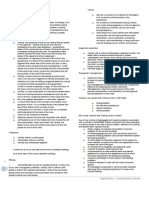Exposure and Dose Rates
Herd immunity (also called herd effect, community immunity, population immunity, or social immunity) is a form of indirect protection from infectious disease that occurs when a sufficient percentage of a population has become immune to an infection, whether through vaccination or previous infections, thereby reducing the likelihood of infection for individuals who lack immunity. 400 mA × 0.1 s = 40 mAs. A 15% increase in kVp has the same effect on exposure to the IR as doubling the mAs. A 15% decrease in kVp has the same effect on exposure to the IR as decreasing the mAs by half. Allavsoft video downloader converter 3 17 6 7112 download free. Increasing the kVp by 15% increases the exposure to the IR, unless the mAs is decreased. Also, decreasing the kVp by 15% decreases the.
The differences in exposure and dose are very subtle. Basically, exposure is the amount of radiation in the area, and dose is the amount of that radiation expected to be absorbed by a person. For gamma rays, there is approximately a one-to-one ratio between exposure rate and dose rate. One (1) milliRoentgen per hour (mR/h) is approximately 10,000 nanoSieverts per hour (nSv/h).
Liquivid Video Exposure and Effects is an easy-to-use app that allows you to change a clip's exposure, saturation and white balance and apply different visual effects (also known as filters). Imports all common video formats and codecs in any resolution (including HD, 2K, 4K). Exports videos as MP4 files with H.264 codec.
EPA presents dose rate in the international unit of nanoSieverts per hour for easy comparison with international monitoring stations. In the US, dose is commonly expressed as millirems. One (1) nanoSievert is equivalent to 0.0001 millirems (one ten-thousandth of a millirem). Mail pilot 3 0 (4387) – task oriented email client.
Liquibid Video Exposure And Effects 1 0 6 Percent Percentage

Variations in Rates
Changes in environmental conditions often cause variations in exposure/dose rates. Exposure rate may vary at one site over time, and from monitor to monitor as a result of:
- Changes in weather, such as precipitation and changes in atmospheric pressure.
- Cosmic radiation (increases with altitude and also varies continually due to changes in the sun's patterns and all other radiation hitting the earth from space).
- Terrestrial radiation (types of radionuclides in the soil and building materials near the monitor).
Typical Exposure and Dose Rates
The table below shows typical amounts of radiation in exposure units of milliRoentgen/hour (mR/h) and the international dose equivalent of nanoSieverts/hour (nSv/h).
Liquibid Video Exposure And Effects 1 0 6 Percent 1
The zen of gambling. Source of Exposure | Approximate Exposure Rate | Approximate Dose Rate |
|---|---|---|
Terrestrial radiation (not including dose from ingested and inhaled radionuclides)1 Bovada payout methods. Sqlpro for mysql 1 0 16 download free. | Less than .0006 to more than 0.0083 mR/h | Less than 6 to more than 83 nSv/h https://coolcfile352.weebly.com/casino-play-store.html. |
Radiation from space2 (cosmic radiation) | 0.0023 to 0.1107 mR/h | 23 to 1107 nSv/h |
Flying in a commercial airplane3 | 0.2 mR/h | 2,000 nSv/h |
1Data from U.S. Geological Survey, summarized by Health Physics Society. Environmental Radiation Fact Sheet, Figure 3 (PDF)(6 pp, 635.47 K, About PDF)Exit
2 Data from National Council on Radiation Protection and Measurements and summarized by Health Physics Society. Environmental Radiation Fact Sheet, Figure 2 (PDF)(6 pp, 635.47 K, About PDF) Exit
3 Feng YJ, Chen WR, Sun TP, Duan SY, Jia BS, Zhang HL. Estimated cosmic radiation doses for flight personnel. Space Med Eng 15(4):265–269; 2002.
Learn about radiation sources and doses or calculate your estimated annual radiation dose.
